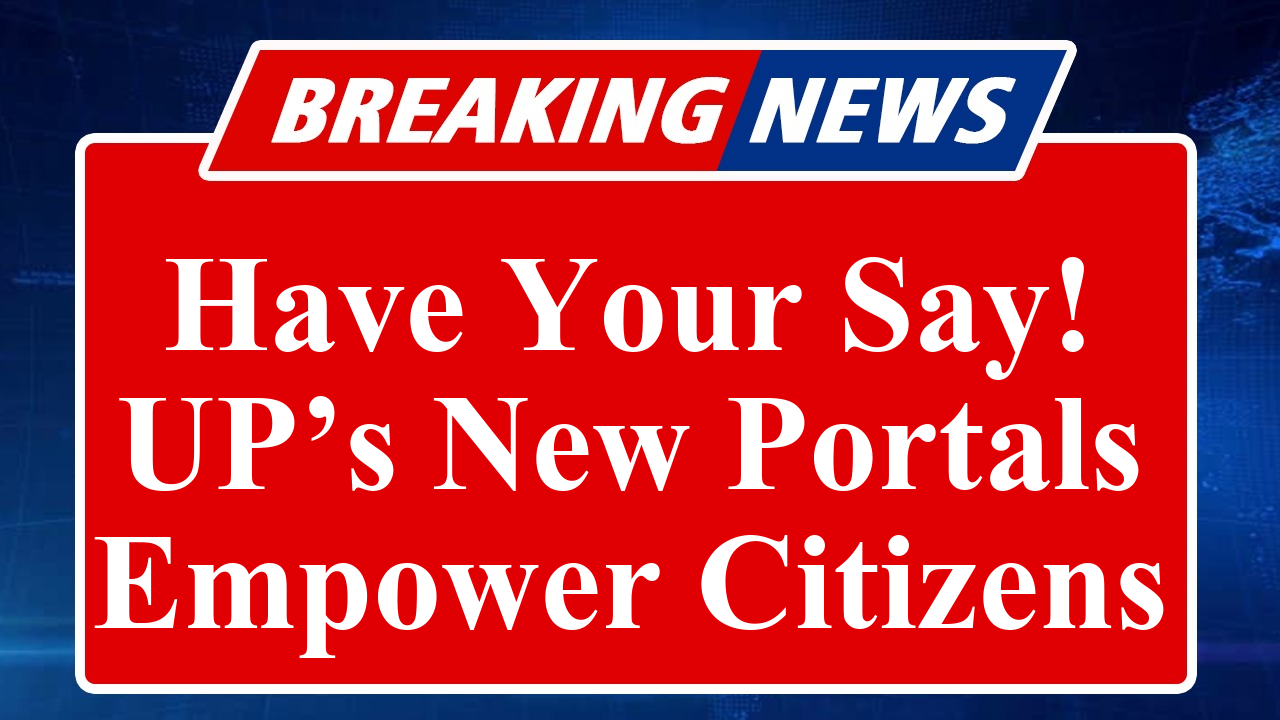“Uttar Pradesh has introduced innovative online portals to enhance citizen feedback, aiming to improve governance and public services. These platforms allow residents to share input on policies, report issues, and participate in decision-making. The initiative reflects UP’s commitment to transparency and digital inclusion, fostering a stronger connection between the government and its citizens.”
Uttar Pradesh Unveils Digital Portals for Citizen Feedback
In a significant move to strengthen participatory governance, the Uttar Pradesh government has rolled out a series of new online portals designed to collect citizen feedback and enhance public engagement. Launched in early 2025, these platforms aim to bridge the gap between the state administration and its residents, enabling them to voice opinions, report grievances, and contribute to policy-making processes.
The initiative, spearheaded by the UP Department of Information Technology and Electronics, includes dedicated portals accessible through the state’s official website, www.up.gov.in. These user-friendly platforms allow citizens to submit feedback on a range of issues, from infrastructure and public services to local governance and development projects. The portals are equipped with features like real-time grievance tracking, multilingual support, and integration with mobile applications to ensure accessibility across urban and rural areas.
A key highlight of the initiative is the “UP Citizen Connect” portal, which encourages residents to share suggestions on state policies and flagship schemes. For instance, citizens can provide input on programs like the Mukhyamantri Awas Yojana or urban development projects in cities like Lucknow and Varanasi. The portal also includes a section for polls and surveys, enabling the government to gauge public sentiment on critical issues such as education reforms or healthcare accessibility.
Another portal, “Grievance Redressal 2.0,” focuses on streamlining complaint resolution. Citizens can report issues related to public utilities, road infrastructure, or administrative inefficiencies, with a promise of faster response times. According to state officials, the portal uses artificial intelligence to categorize and prioritize complaints, ensuring timely action. Since its launch, over 50,000 grievances have been registered, with a reported 70% resolution rate within the first two months.
The UP government has also introduced a feedback mechanism for rural areas, targeting villages with limited internet access. Through partnerships with Common Service Centres (CSCs), citizens can submit feedback offline at local CSC outlets, which is then uploaded to the digital system. This move aims to ensure inclusivity, particularly for marginalized communities in districts like Bahraich and Shravasti.
To promote the portals, the state has launched awareness campaigns across social media platforms and local media outlets. Chief Minister Yogi Adityanath emphasized the importance of citizen input, stating, “Our government is committed to Viksit Bharat. These portals empower every citizen to be a partner in UP’s development journey.” The initiative aligns with the national MyGov platform, which has successfully fostered citizen engagement since 2014.
However, challenges remain. Digital literacy, especially in rural UP, poses a hurdle, with only 34% of the state’s population having regular internet access, according to a 2024 survey by the National Statistical Office. The government has responded by integrating chatbot support and helplines to assist users in navigating the portals. Additionally, concerns about data privacy have been raised, prompting the state to implement multi-factor authentication and encryption protocols to safeguard user information.
The portals have already shown early success in urban centers like Noida and Kanpur, where residents have used them to report civic issues like waterlogging and illegal encroachments. In Noida, for instance, citizen feedback led to the swift repair of a major road in Sector 62, which had been damaged during monsoon floods. Such examples highlight the potential of these platforms to drive tangible change.
The UP government plans to expand the initiative by integrating feedback analytics into policy decisions. By leveraging data from these portals, the state aims to prioritize development projects based on citizen-identified needs, a strategy inspired by the success of similar platforms in states like Telangana.
Disclaimer: This article is based on recent reports and information available on government websites and credible news sources. The data and statistics mentioned are subject to change as per official updates. Readers are advised to verify details through official channels like www.up.gov.in for the latest information.

